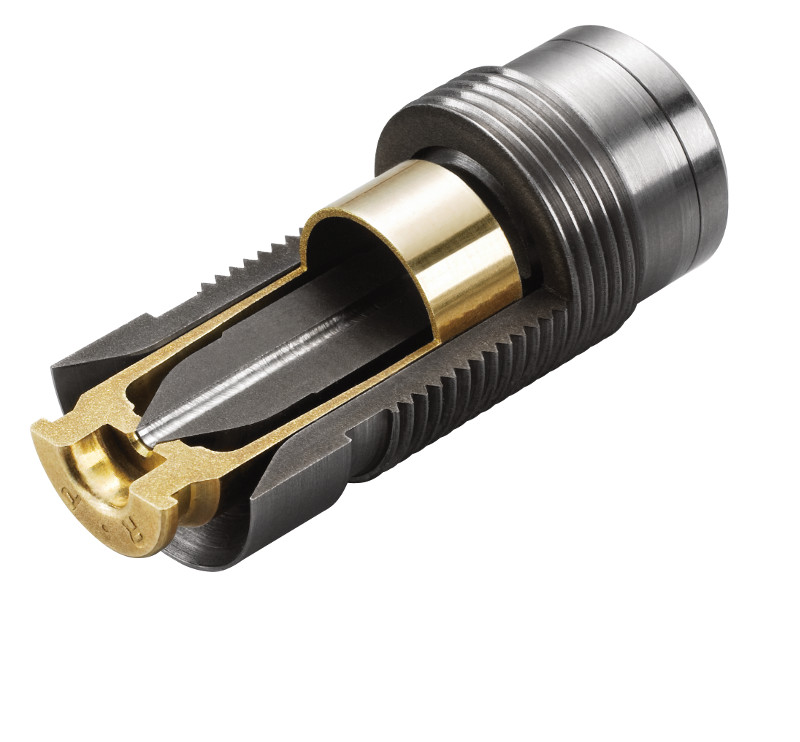I've received a good deal of advice, here and on another board, both in posts and in PMs, from many, who do not own this new rifle, with suggestions and warnings reference the new Remington barrel, rifling, the Remington made breech plug, and their ignition system. Though I've yet to see any issue with my particular rifle reference these warnings, I decided to explore some of these suggestions to determine there feasibility as options in the event I ran into such problems, as warned, with my rifle. I've been given a few references to contact, one of whom I already knew, so I called and explored those options.
To quote Bob (Parker), the reports I've received contain "both fact and fiction".
This is where I stand, and I would suggest others to explore for themselves to determine such personal favorites and choices.
First, building a smokeless muzzleloader. I have two mutual aquantances with Bob, a custom smokeless rifle builder I've known for over a quarter century, and the man who shoots for the builder and hunts with his custom built rifle. Though many are making extremely accurate smokeless muzzleloaders, I cannot imagine any that could produce the long string of tiny groups shot at 500 yards and game animal kills at much further distances as this particular smokeless rifle. It is most definitely top shelf, and would likely be my choice if I went that route. But, I have zero interest in hunting with a smokeless muzzleloader, and due to current legalities, it would be a no-no. Black Powder (the real deal), Replicates of Black Powder (Pyrodex or 777), or Non-Replicate Substitutes (Blackhorn 209), would be mandatory.
Second, converting a smoker to smokeless. As much as the above, built from the ground up, custom smokeless muzzleloader is liked, if wanting a conversion made, Hankin gets the vote. I received a good deal of positive feedback on the Hankin barrel/breech plug conversion. Bob (Parker) had Hankin convert a T/C Pro Hunter and is pleased. But again, I have no interest in smokeless.
Third, the factory Remington Ultimate 50cal using Blackhorn 209. Most of my feedback in this area came from a personal friend, who shoots and hunts with his rifle using the Blackhorn, my own personal rifle, and Bob (Parker). The remaining feedback are from those I do not know from Adam, but they actually own and shoot the rifle. I believe Bob put it best, calling it "the most user friendly muzzleloader" he has shot. No issues with the new Remington breech plug and ignition, and pretty much nothing but positive feedback on the rifle and its performance. Trying to pin down differences between the old Johnston breech plug design, and the new Remington design, it appears to have improvements over and above that of just the steel used. The threads are finer, stronger, more protected, and resist erosion, to eliminate those issues experienced with the Johnston breech plug. The new design will break loose from full 100 in/lb torque with approximately only 80 in/lb applied torque, making it very user friendly. It does not experience the removal issues of the Johnston plug, stripped threads, rounded off nipples, etc. In addition, the sealing of the ignition case appears fairly good and uniform for the case life as recommended by Remington. I realize some are reporting second or third hand that someone else is seeing only one re-prime before failure, but, I've been unable to confirm this first hand. I may attempt a test, by repeatedly chambering a new case a half dozen times or so, and then fire the case. So it always possible that an excited new owner is wearing out a new case before firing the rifle the first time. But, I'm just not seeing this occur on my end, the rifle just plain works. As far as a drop-in Hankin plug to leave it 50cal sub powders with his module system, that animal does not appear to exist. If it did, there is no data to support it is capable of duplicating the ignition performance of the Remington ignition, by burning such a large volume of power within the barrel. All previous attempts using various modules and plugs had failed, hence the industry debate over the reality of burning 200 grains 777 pellets. It seems pretty clear that it is now proven with the new Remington plug, so that point is moot in my book. End results, feedback I have received from end users of this rifle have me leaning toward staying on my current track with the factory plug and ignition system. All the warnings I've received reference the barrel, rifling, breech plug, ignition cases, and running Blackhorn 209 seem to fall into Bob's category of fiction, and not fact. Absent any normal production line hiccups with assembly, it appears to be a well thought out and well executed production rifle that works.
Best









